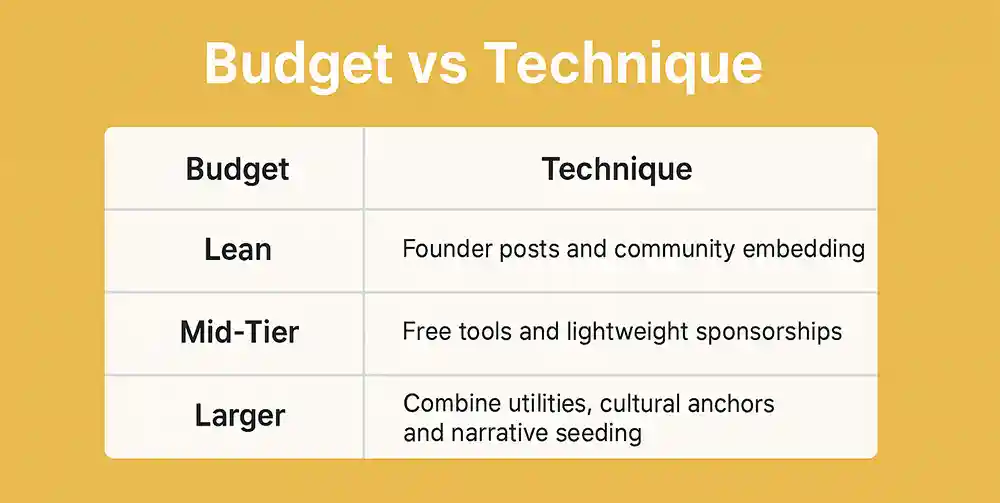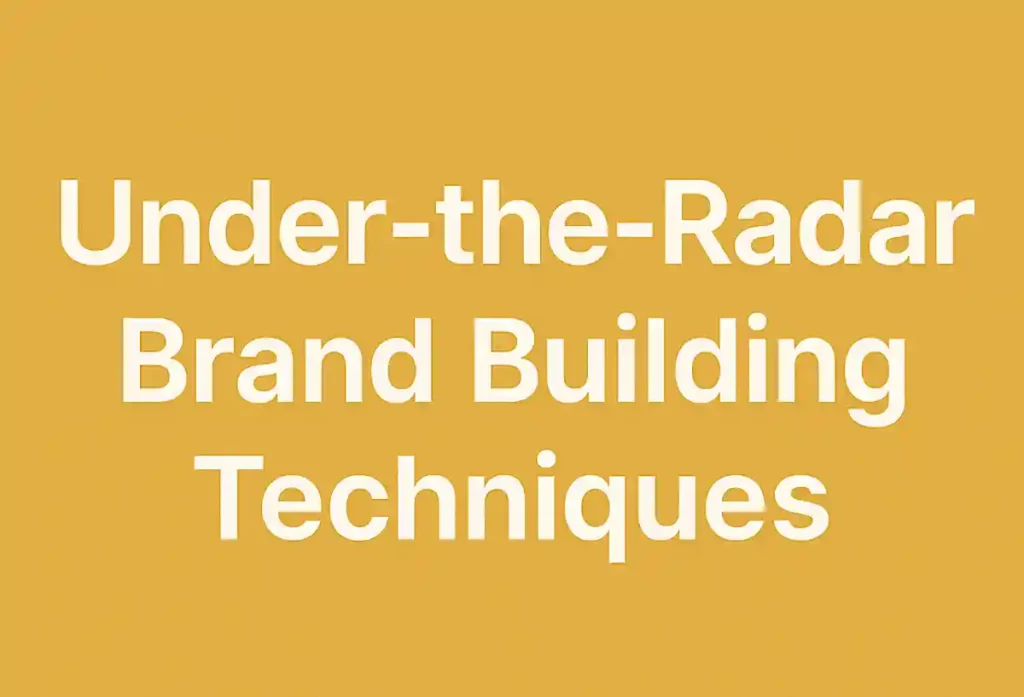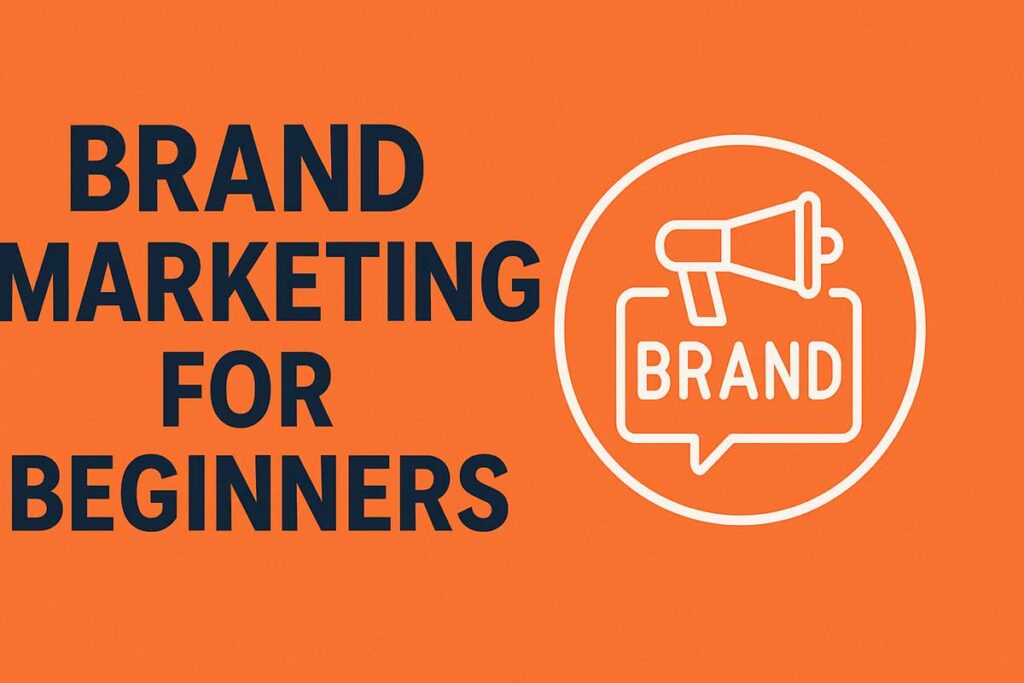Why You Need to Look Beyond Traditional Brand Marketing
Let’s be honest. Most businesses still default to the same three moves when it comes to brand marketing: running ads, sponsoring an event, or issuing a press release. They work to a point, but here’s the problem. Audiences have trained themselves to tune them out.
In Bournemouth, Poole, Dorset, and across the UK, I’ve seen smaller firms with limited budgets often outsmart bigger brands because they try things that don’t look like traditional marketing. That’s where the wins are: techniques competitors overlook, yet customers trust.
Here are five approaches I’ve tested with clients that quietly build brand equity and outperform traditional noise.
1. Community-Led Brand Building
People don’t trust ads; they trust people. That’s why embedding yourself in niche communities is so powerful.
- Join specialist LinkedIn groups, Slack channels, or local forums.
- Answer questions without selling.
- Share resources that solve problems directly.
– I’ve seen a Poole marine engineering business pick up steady B2B contracts simply by being present in an industry forum. No ads. No budget. Just consistent, genuine input.
Try this now: Find one online group where your customers hang out. Commit to one helpful, non-promotional post a week.
2. Turn People Into Media Channels
A logo doesn’t inspire trust; a face does. Business owners and teams who show up authentically become walking brand ambassadors.
- Weekly LinkedIn posts on lessons learned.
- Short videos showing how you work.
- Podcast guest slots where your team tell real stories.
I’ve watched Dorset SMEs pull more inbound leads from a single staff member’s LinkedIn posts than from their entire ad budget. But the trade-off? Consistency is key. Drop off for two months and momentum vanishes.
Try this now: Pick one person in your business (maybe you) and block out 30 minutes a week to share insights online. Keep it human, not polished.
3. Brand Utility: Tools, Templates & Assets
The brands that win are the ones that help before they sell. That’s why free tools or resources deliver compounding ROI.
- Calculators, checklists, templates.
- Lightweight apps or browser plug-ins.
- Even a free Dorset market trends report.
We built our Free SEO & Marketing Tools for this exact reason. They work every single day without me lifting a finger. Yes, there’s an upfront cost, but it pays back tenfold because it keeps our brand useful.
Try this now: Ask your team, “What’s the one small tool or template our customers would use weekly?” Build it and brand it.
4. Cultural Anchors & Local Borrowing
Here’s one most marketers ignore: attach your brand to something your audience already cares about locally or culturally.
- Sponsor a grassroots team.
- Collaborate with a local artist.
- Weave cultural references into your campaigns.
I’ve seen a Bournemouth café chain tie itself to beach volleyball culture, and suddenly their name’s everywhere without a single billboard. The caveat: do this authentically, not as a gimmick. Audiences can smell fake a mile off.
Try this now: Identify one cultural touchpoint in Bournemouth or Poole that overlaps with your audience. Ask, “How can we show up here in a meaningful way?”
5. Narrative Seeding in Non-Obvious Spaces
Brands tend to cluster in the same places: Facebook ads, local press, maybe some PPC. But the quieter, less obvious spaces are often where trust is built.
- Guest on niche podcasts.
- Publish “how-to” threads on LinkedIn or Quora.
- Share bite-sized insights in Medium articles.
This isn’t about chasing reach. It’s about showing up where competitors don’t. I once advised a Dorset consultancy to appear as a guest on a niche industry podcast, and they secured their biggest retainer client within a month.
Try this now: List three platforms your competitors ignore. Commit to testing one content drop there in the next 30 days.
Quick Decision Table
| Business Type | Best Under-the-Radar Play | Why It Works |
| Startups & Small Businesses | Community building + business posts | Low cost, builds trust fast |
| SMEs | Free tools & templates | Scales reach without extra spend |
| Corporates | Narrative seeding + cultural anchors | Creates authority and long-term recall |
| Hobby/Personal Projects | Local cultural borrowing | Builds community loyalty cheaply |
How We Tailor Our Approach
The truth is, there isn’t a single playbook that fits everyone. I’ve worked with brands in Bournemouth that were three people strong, and with corporates in London with entire departments, and what works for one is wasted effort for the other.
- Startups → If you’re bootstrapping, your boss is your marketing department. Visibility comes from showing up in communities, talking openly about the grind, and letting people buy into you before they ever buy the product.
- SMEs → Once you’re stable, the game changes. You need inbound momentum that doesn’t eat all your time, which is where brand utilities (tools, templates, calculators) quietly pull leads in the background.
- Corporates → At scale, communities and tools are nice, but authority is what matters. This is where narrative seeding and cultural positioning pay off, as it allows for telling stories in places that smaller competitors can’t reach.
- Personal projects → For hobby ventures or passion side projects, don’t overthink it. Anchor yourself locally. A well-placed cultural play in Bournemouth or Poole, such as sponsoring a grassroots event or showing up authentically, will carry more weight than trying to mimic a corporate campaign.
I’ve seen all four stages in action, and the key is knowing where you are on that spectrum and not wasting energy on tactics that don’t match your scale.
Service-by-Budget Guide
Budgets change the game. I’ve seen businesses spend £500 on ads that vanished in a week, when that same £500 could’ve built something useful that pulled leads for years. So here’s how I look at it:

- Lean budgets → Don’t kid yourself about flashy campaigns. Double down on business owner posts and community embedding. Yes, it’s time-heavy, but if money’s tight, sweat equity is your best friend.
- Mid-tier budgets → This is where you can start layering in free tools and lightweight sponsorships. I’ve seen SMEs in Dorset sponsor a local event for pennies compared to paid media — and the brand recall lasted months, not days.
- Larger budgets → Now you can afford to combine plays. Build utilities, align with cultural anchors, seed narratives nationally. But don’t blow it all on noise, the smart corporates mix long-term brand assets with tactical moves so their spend compounds.
The honest opinion? Most businesses try to jump to “big budget” plays before they’ve earned the right. Nail the basics first, then scale.
Brand Building Questions Businesses Often Ask
We don’t have a big budget — how can we realistically build a brand?
Start small but consistent. Focus on business owner visibility (posting one LinkedIn update a week, showcasing the real journey) and community engagement (joining forums or groups where your target audience is active). Both are free, and they compound over time. I’ve seen a Dorset start-up land its first contracts this way before ever running an ad.
Is community-building really worth the time investment?
Yes — but only if you show up regularly. Community trust grows slowly, then suddenly. Block out one hour a week to contribute to industry groups or niche communities. After 3–6 months, you’ll find you’re the brand people tag when questions come up. That’s worth far more than one-off ad spend.
How do we know if a free tool or template is worth building?
Ask yourself: “Would our customers actually use this once a week?” If the answer is yes, it’s worth the effort. Keep it simple. One Dorset client created a downloadable checklist that still drives email sign-ups two years later.
We’re an SME — should we invest in sponsorships or paid ads first?
If you’re mid-stage, test local sponsorships first. They cost less, stick longer in people’s memories, and give you real-world presence. Paid ads have their place, but they’re a tap you have to keep turning on. Sponsorships create recall that outlives the campaign.
How do we measure ROI on under-the-radar brand plays?
Don’t obsess over vanity metrics. Track:
Referral traffic from communities.
Leads generated by free tools or downloads.
Mentions or tags in local spaces.
Brand recall in customer surveys.
If those numbers are moving up, the plays are working. Even if “likes” aren’t exploding.
Can staff posts really compete with polished brand campaigns?
100%. People buy into people. A quick, honest LinkedIn post from your team can outperform a polished company update because it feels authentic. The catch? Consistency. One post won’t move the needle, but 20 over 6 months will.
How do we choose which cultural or local anchors to align with?
Look for overlaps between what your customers already care about and what’s underrepresented in your market. For example, I saw a Poole business align with grassroots sailing, it made total sense for their audience and gave them an edge over bigger competitors.
What’s the biggest mistake SMEs make with brand building?
Trying to copy corporates too early. You don’t need a brand campaign plastered everywhere; you need trust at the ground level. Get the basics right, communities, business owner presence, maybe a simple tool, before chasing national attention. Otherwise, you burn money without building equity.
Build Trust Where Others Don’t Look
Most brands fight for attention in the same crowded channels. But the businesses I’ve seen grow the strongest in Bournemouth and beyond are the ones that build trust quietly, where competitors aren’t even looking.
Ready to grow your brand the smarter way?
We help businesses in Bournemouth, Poole, Dorset and UK-wide build brands people trust — using under-the-radar techniques that compound over time, not just ads that fade next week.
- Practical plans that fit your budget and stage
- Community and director-led visibility that builds trust
- Free tools and assets that generate steady inbound
- Cultural anchors and narrative seeding for lasting recall


